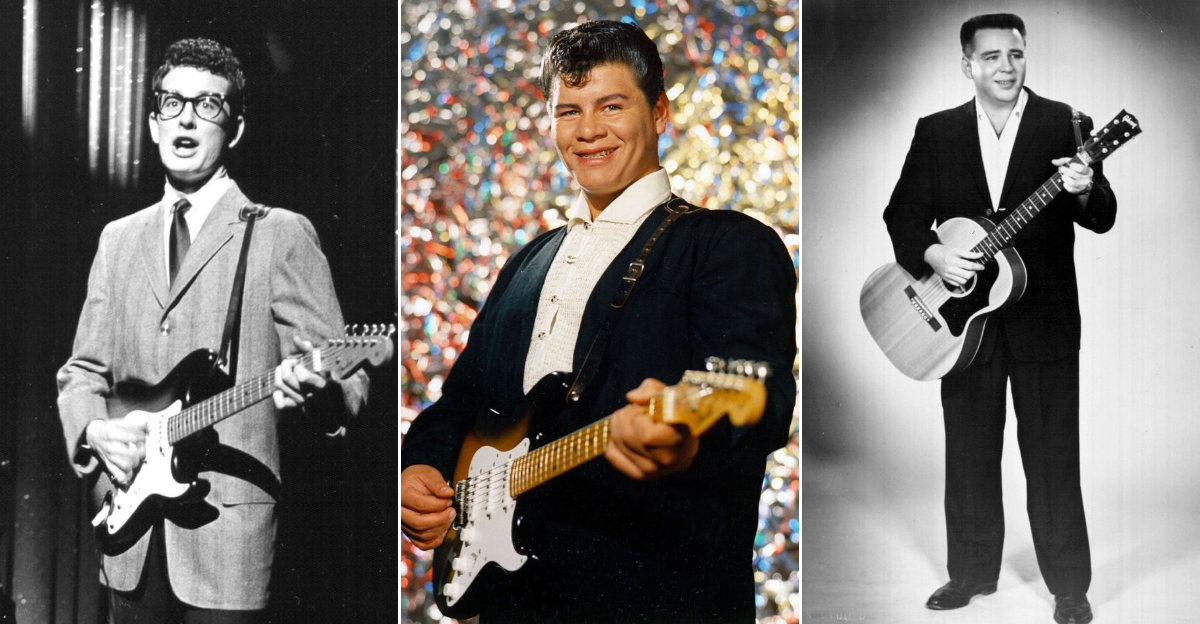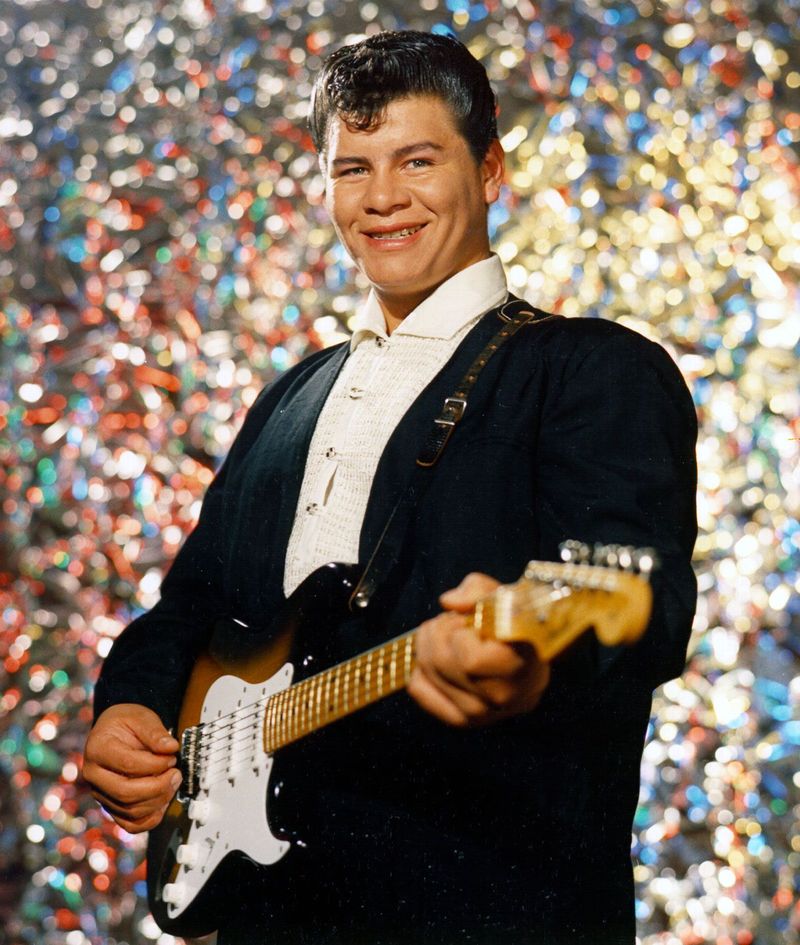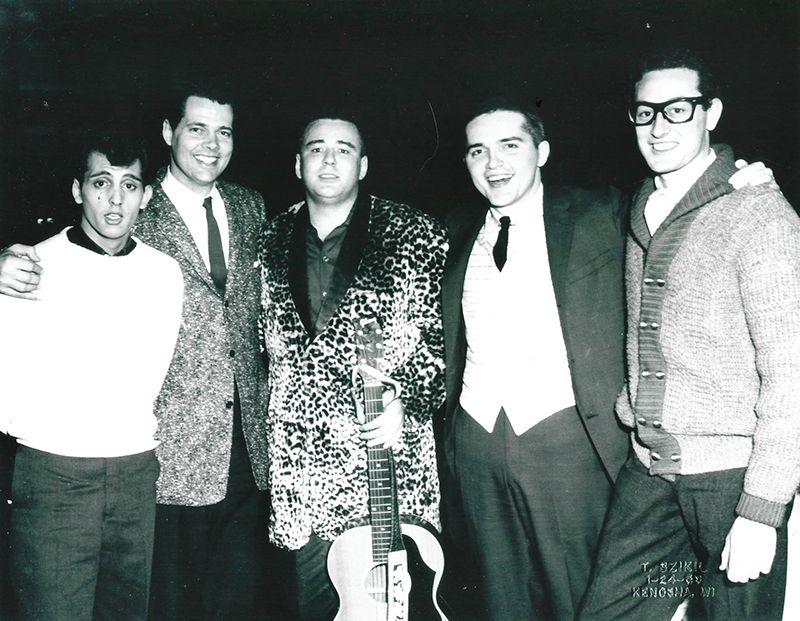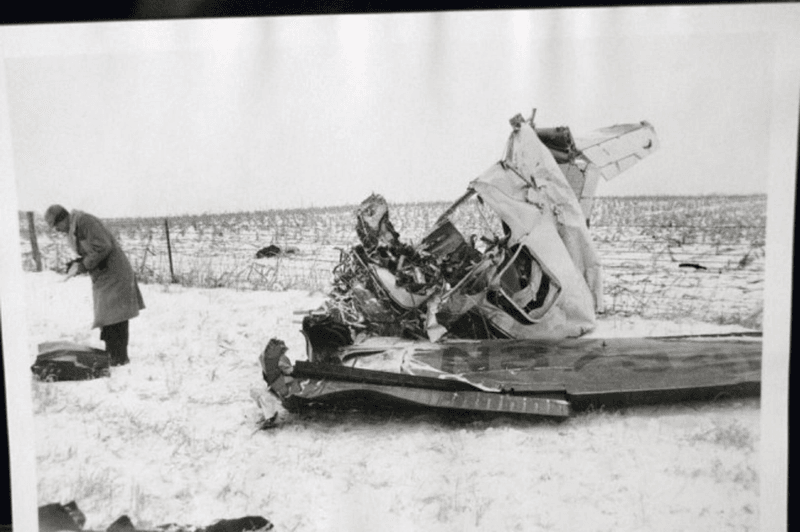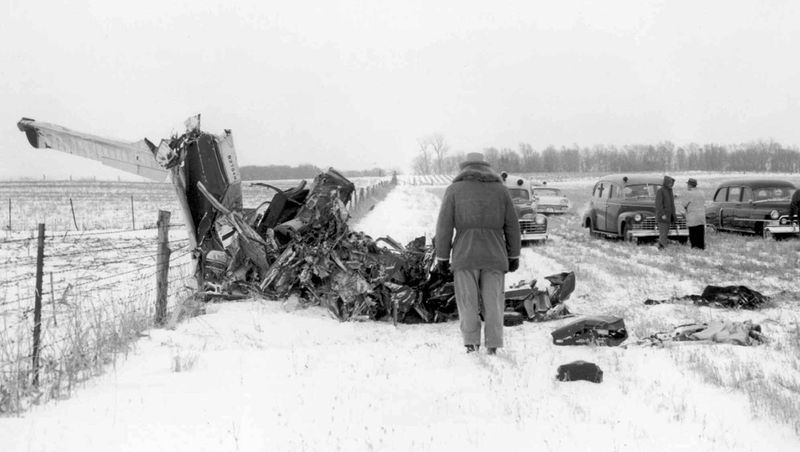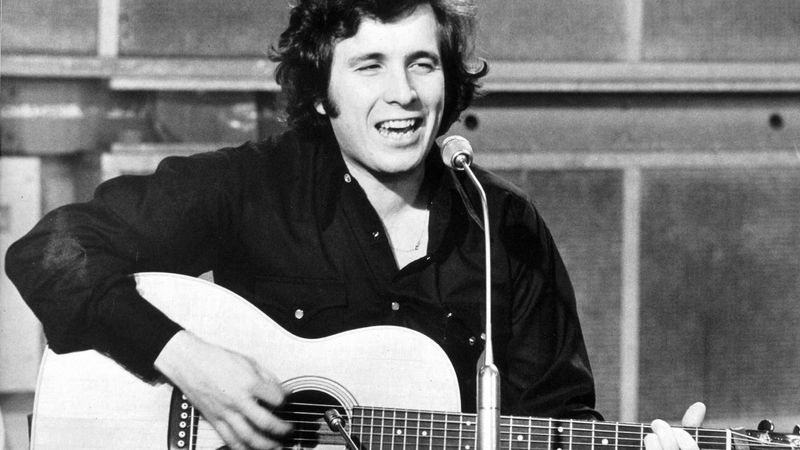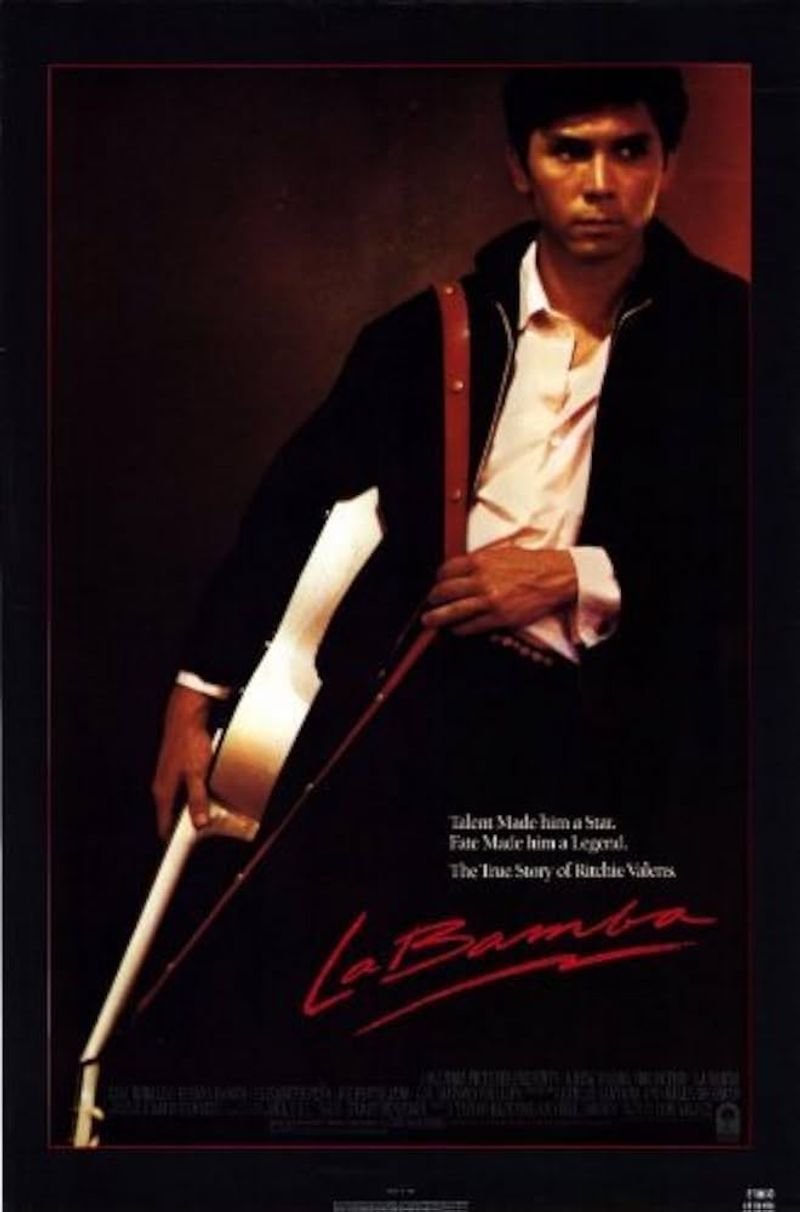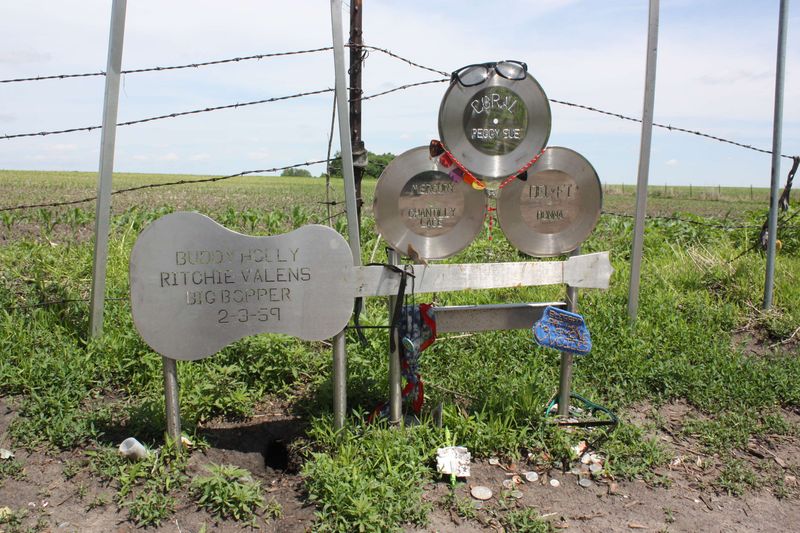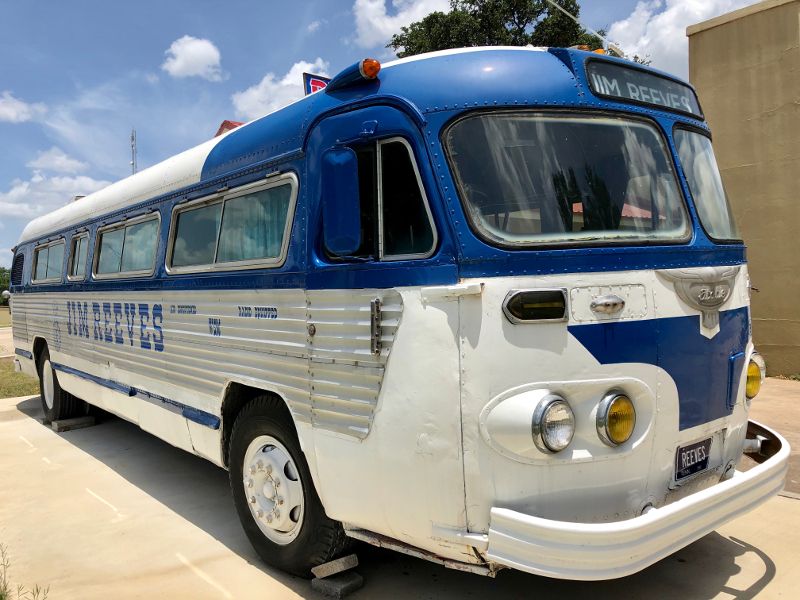It was a single moment that changed the course of music history. On February 3, 1959, three of rock ‘n’ roll’s brightest rising stars—Buddy Holly, Ritchie Valens, and J.P. “The Big Bopper” Richardson—died in a plane crash that would become known as “The Day the Music Died.” These legends were on the brink of even greater fame when tragedy struck. Here’s how the heartbreaking event unfolded—and why it still resonates today.
1. Buddy Holly Was Only 22—And Already a Rock Pioneer
A driving force in early rock ‘n’ roll, Buddy Holly helped shape the genre with hits like “Peggy Sue” and “That’ll Be the Day.” His signature glasses and hiccuping vocal style became iconic. Despite his short career, he inspired legends like The Beatles, Bob Dylan, and Elvis Costello. Though his life was tragically cut short, Holly’s legacy only grew stronger over time. The Beatles even borrowed part of their name from Holly’s band, The Crickets. His influence on music can still be felt today, making him a true pioneer of rock and roll.
2. Ritchie Valens Was Just 17—The First Latino Rock Star
Ritchie Valens brought Mexican-American culture to mainstream music with “La Bamba” and “Donna.” Just a teenager, he had only recently skyrocketed to fame. His impact was groundbreaking, paving the way for future Latino artists in American pop and rock. Valens was a trailblazer, breaking barriers and creating a lasting influence in the music industry. His short-lived career left an indelible mark, showing the world the rich cultural diversity that could exist within rock ‘n’ roll. His story continues to inspire many young Latino musicians today.
3. The Big Bopper Was a Radio DJ Turned Hitmaker
J.P. Richardson, better known as The Big Bopper, first made waves as a Texas DJ before scoring a novelty hit with “Chantilly Lace.” Known for his booming voice and larger-than-life personality, he was quickly becoming a household name. Before his rise to fame as a singer, Richardson was known for his charismatic presence on air, connecting deeply with his audience. His transition from DJ to musician was seamless, showcasing his versatility. The Big Bopper’s influence reached far beyond his music, impacting radio and performance alike.
4. The Winter Dance Party Tour Was Brutal
The crash happened during the Winter Dance Party tour—a grueling, poorly planned trip across the Midwest. The performers were crammed into buses with no heat during a brutal winter, leading Buddy Holly to charter a small plane out of frustration. These harsh conditions would test the resilience of any artist, let alone rising stars like Holly, Valens, and Richardson. The poorly managed tour highlighted the often neglected wellbeing of musicians during that era, raising awareness for improved travel standards in the entertainment industry.
5. The Fatal Flight Was a Last-Minute Decision
On February 2, 1959, after a show in Clear Lake, Iowa, Holly chartered a Beechcraft Bonanza to get ahead to the next stop in Moorhead, Minnesota. The Big Bopper, suffering from the flu, asked Waylon Jennings to give up his seat, while Ritchie Valens won his seat on the plane with a coin toss. This last-minute decision changed the course of music history forever. The chartered flight, meant as an escape from the grueling tour conditions, turned into an unexpected tragedy, emphasizing the unpredictability of life on the road.
6. The Plane Crashed Minutes After Takeoff
The plane took off at around 12:55 AM but never made it far. It crashed into a cornfield just outside of Mason City, Iowa, in snowy, low-visibility conditions. All three musicians and the 21-year-old pilot, Roger Peterson, died on impact. This tragic event, unfolding mere minutes after takeoff, shocked the world. The crash site, marked by devastation, became a somber reminder of the fragility of life. The immediate aftermath resonated deeply across the globe, leaving fans and fellow musicians in mourning.
7. Waylon Jennings Lived with Survivor’s Guilt
Jennings, then a member of Holly’s backing band, gave up his seat to The Big Bopper. His haunting words to Holly—“I hope your ol’ plane crashes”—were said in jest, but they haunted him for the rest of his life. The weight of this unintended prophecy laid heavily on Jennings’ conscience. This experience shaped him profoundly, influencing his music and life choices. Jennings carried this burden silently, a testament to the unpredictability and impact of seemingly trivial decisions in life.
8. Don McLean Immortalized It as ‘The Day the Music Died’
In 1971, singer-songwriter Don McLean released “American Pie,” a song that famously refers to the crash as “the day the music died.” The phrase became synonymous with the tragedy and its deep cultural impact. McLean’s poignant lyrics captured the sense of loss and nostalgia felt by many. The song’s enduring popularity reflects the lasting legacy of Holly, Valens, and Richardson. Through “American Pie,” McLean immortalized that fateful day, ensuring it remained etched in the collective memory of music lovers worldwide.
9. Buddy Holly’s Legacy Grew After His Death
Though his life was cut short, Holly’s influence only grew. The Beatles took part of their name from Holly’s band, The Crickets, and covered many of his songs. He was one of the first inductees into the Rock & Roll Hall of Fame. Holly’s innovative sound and style inspired countless musicians. His posthumous success reflects his remarkable talent and vision. Holly’s story remains a powerful reminder of the impact one individual can have on an entire industry, transcending time and trends.
10. Ritchie Valens’ Story Became a Hit Movie
In 1987, La Bamba, a biopic starring Lou Diamond Phillips, reintroduced Valens to a new generation. The film honored his cultural legacy and personal journey from obscurity to stardom—and ended with the tragedy that stunned the world. La Bamba’s success brought Valens’ story back into the spotlight, highlighting his contributions to music and cultural integration. The movie not only celebrated his life but also revived interest in his music, ensuring his legacy lived on through new audiences.
11. The Crash Site Has Become a Memorial
Fans still visit the site of the crash near Clear Lake, Iowa. A stainless-steel guitar and a pair of glasses mark the spot in remembrance of the fallen stars who shaped music in their short lives. This simple yet poignant memorial draws visitors from around the world. It stands as a testament to the enduring legacy of Holly, Valens, and Richardson. The site invites contemplation and respect, offering a place for fans to pay tribute to the artists who left an indelible mark on music history.
12. It Changed How Tours Were Planned Forever
In the wake of the crash, promoters became more conscious of travel safety and logistics. The tragedy shed light on the harsh conditions many young musicians faced in the name of chasing success. This unfortunate event sparked lasting changes in the music industry. Touring practices were scrutinized and improved, ensuring better comfort and safety for artists. These changes not only protected musicians but also allowed them to focus more on their craft, leading to richer, more vibrant performances.
13. Their Music Still Lives On
More than six decades later, the music of Buddy Holly, Ritchie Valens, and The Big Bopper continues to inspire. They may have left the stage too soon, but their songs—and their stories—are timeless. The enduring appeal of their music speaks to its universal resonance and creativity. Fans old and new cherish their recordings, discovering fresh nuances with each listen. The artists’ innovative spirits live on through their melodies, proving that true artistry transcends time, connecting generations across the world.
